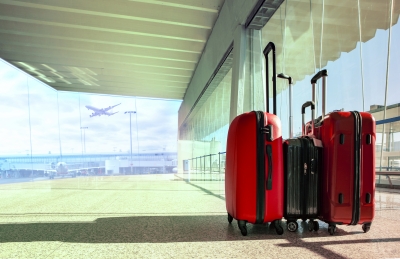 The Department of Transportation (DOTr) supports plans to separate the conflicting mandates of the Civil Aviation Authority of the Philippines (CAAP), retaining its regulatory function and transferring its role of airport developer and manager to a different agency.
The Department of Transportation (DOTr) supports plans to separate the conflicting mandates of the Civil Aviation Authority of the Philippines (CAAP), retaining its regulatory function and transferring its role of airport developer and manager to a different agency.
“We agree that CAAP’s responsibility of managing and operating airports should be transferred ultimately to another agency,” DOTr Undersecretary Roberto Lim said in a presentation during the Airports Policy Brief press conference organized by the Joint Foreign Chambers (JFC) on February 15.
Lim noted that bills have been filed in the current and previous Congresses that aim to break up the agency’s mandates to limit it to only a regulatory agency, while a new airport authority will be created to handle development and operation of airports. Lim said this “is a long overdue reform in the aviation sector.”
Lower House transportation committee chairman and Catanduanes representative Cesar Sarmiento has refilled his bill, now House Bill (HB) No. 2041, which aims to amend the CAAP Law, or Republic Act No. 9497, and strengthen the agency’s regulatory functions. However, no version of the bill has been filed in the Senate yet.
The National Logistics Master Plan crafted by the Department of Trade and Industry also strives to address the conflicting mandates of CAAP as well as the Philippine Ports Authority, both of which assume regulatory and commercial functions.
One of the recommendations of the JFC policy brief report is to amend R.A. No. 9497 “in order to address human resource development, strengthen the board and increase the compliance of the Philippines with international standards of safety and security.” The report, which lists suggestions to improve the country’s airport sector, also wants to separate the conflicting functions of CAAP as regulator, operator, and investigator.
“These conflicts have made the agency weak as a regulator and ineffective as an operator of airports,” the report noted.
In response to the previous downgrade of the country’s aviation status after inspections by foreign organizations, the government enacted in March 2008 R.A. No. 9497 to create CAAP—an “independent regulatory body” possessing corporate attributes with quasi-judicial and quasi-legislative powers, and attached to the DOTr for policy coordination. The new law abolished the Air Transportation Office, but retained its commercial and investigatory functions in CAAP.
The report said the current setup is one where CAAP regulates what it also operates, “thereby creating conflicts of interest.”
“Given the milestones achieved by the industry in 2014 (i.e. addressing the ICAO audit findings, the upgrade to Category 1 by the US FAA (Federal Aviation Agency), and removal of Philippine carriers from the European Union (EU) blacklist), CAAP needs to be strengthened as a regulator and to be provided with funds to develop the technical capacity of its staff and officials and to invest in necessary infrastructure to promote safety on the ground and in the skies,” the report said.
Separating CAAP’s functions can be done in two ways, the report said. One is by enlisting the assistance of the Governance Commission for GOCCs to implement the so-called functional delinking through reorganization.
The other is by creating three separate entities, in which one develops and manages Philippine airports (Philippine Airports Authority), another conducts investigations (National Transportation Safety Board), and the third provides direct air traffic control services (corporatization or privatization of air traffic control).
While waiting for legislation, Lim said, CAAP is currently using administrative processes available “to achieve the functional effect of having a unit to start managing and operating airports.”
He said CAAP is also developing a “single level of service” for rollout as the single standard for airports in the country. The transport official, however, noted this would take time considering the different situations and stages of development of these airports.
Lim said DOTr is also finalizing a draft executive order that will “create an aircraft accident investigation board so in the meantime, while we wait for legislation, we have an administrative process that separates and creates an independent accident board for aviation.” – Roumina Pablo
Image courtesy of khunaspix at FreeDigitalPhotos.net





